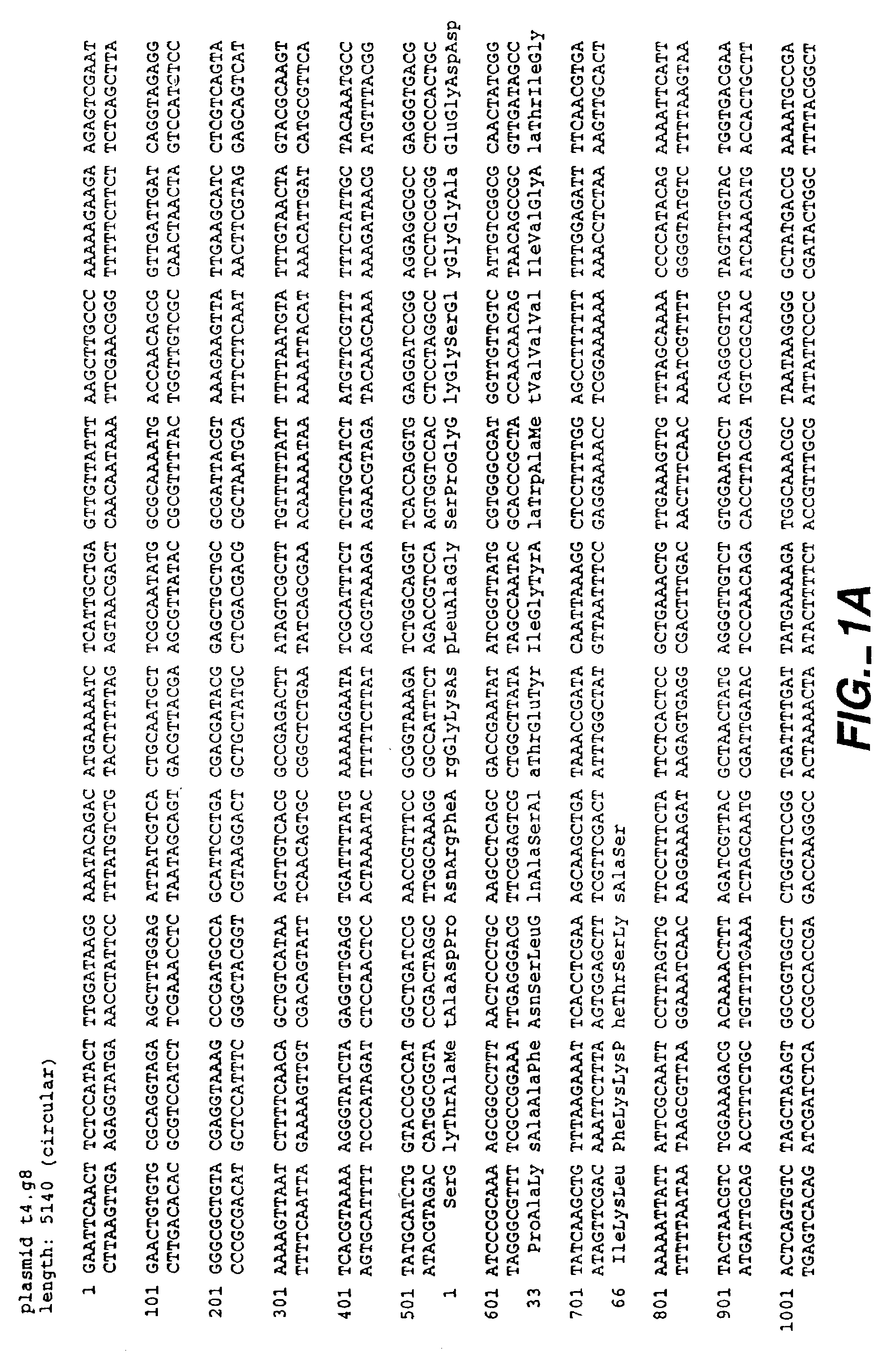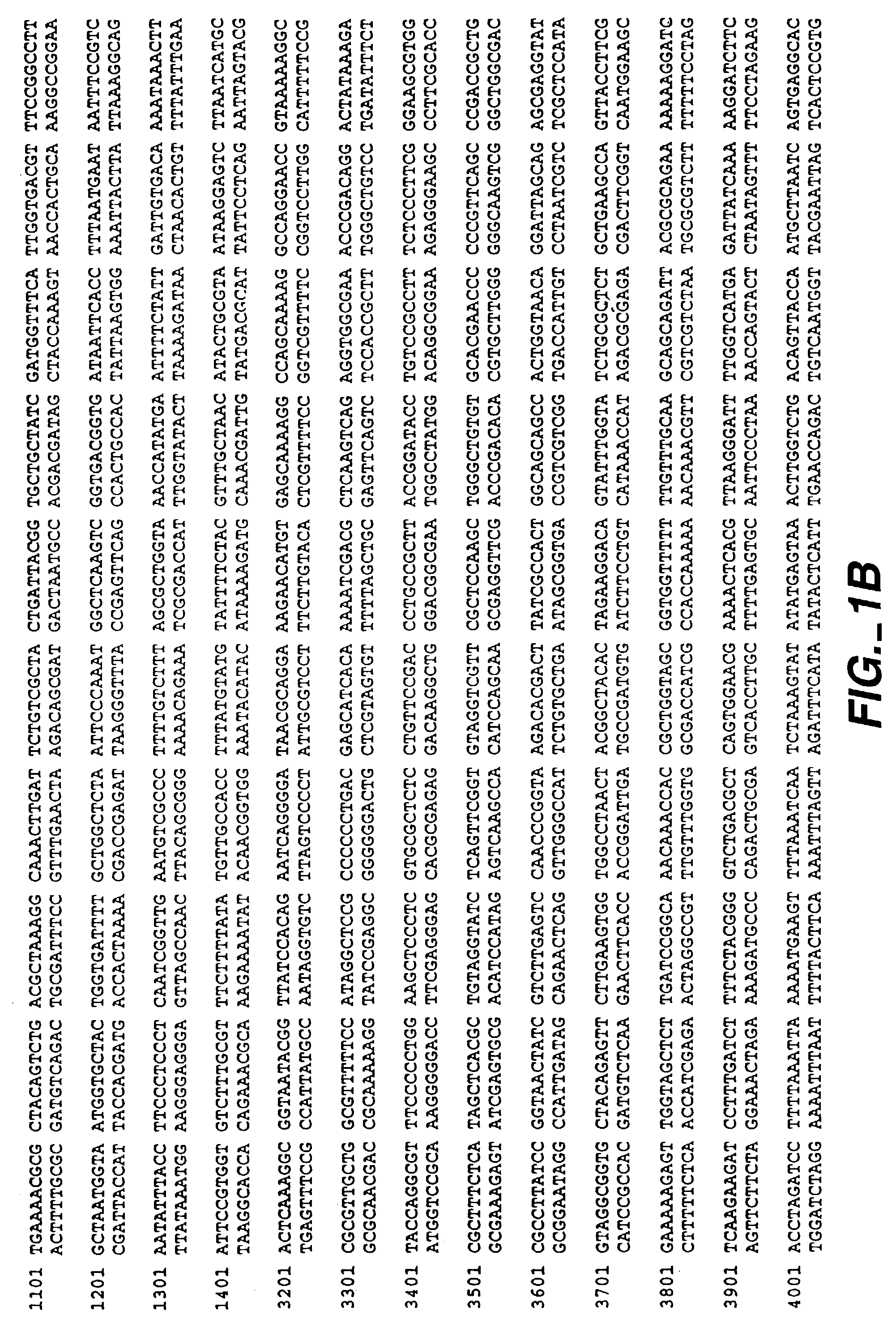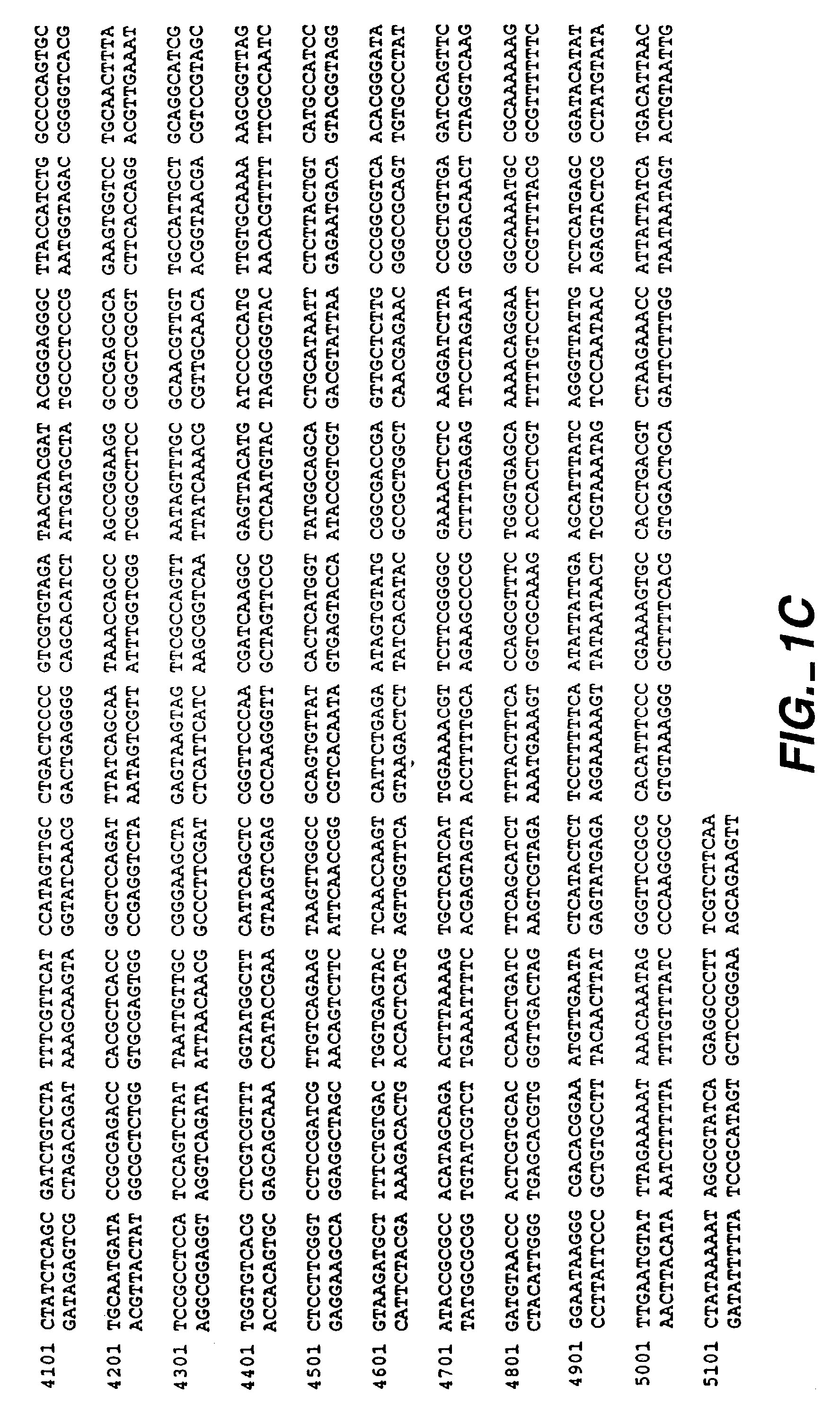Method for treating cartilage disorders
a cartilage disorder and treatment method technology, applied in the field of cartilage disorders, can solve the problems of insufficient or altered function, damaged cartilage layer that does not penetrate to the subchondral bone, and inability to efficiently repair damag
- Summary
- Abstract
- Description
- Claims
- Application Information
AI Technical Summary
Benefits of technology
Problems solved by technology
Method used
Image
Examples
example 1
Phage-Derived Peptides to Bind IGF-1 and Binding Proteins
Introduction:
[0189]It has been shown that peptides that bind specifically and with measurable affinity to target molecules, such as proteins, can be identified from an initial library of many binding and non-binding peptides through binding selections using bacteriophage coat-protein fusions (Smith, Science, 228: 1315 (1985); Scott and Smith, Science, 249: 386 (1990); Cwirla et al., Proc. Natl. Acad. Sci. USA, 87: 6378-6382 (1990); Devlin et al., Science, 249: 404 (1990); reviewed by Wells and Lowman, Curr. Opin. Struct. Biol., 2: 597 (1992); U.S. Pat. No. 5,223,409). In addition, both proteins and peptides displayed on phage can be affinity-enhanced through iterative cycles of mutations, selection, and propagation.
[0190]Libraries of peptides differing in sequence at particular residue positions can be constructed using synthetic oligodeoxynucleotides. Peptides are displayed as fusion proteins with a phage coat protein (such a...
example 2
Displacement of IGF-1 From IGFBPs Using BP3-15
[0249]This Example tests an IGFBP-3-specific peptide, BP3-15, for its ability to block the binding of 125I-IGF-1 in human serum. Human serum was incubated with 125I-IGF-1 ± the peptide and the amount of tracer bound to IGFBPs via size-exclusion chromatography was measured. Addition of the peptide resulted in an approximate 42% decrease in 125I-IGF-1 associated with the 150-KD IGF / IGFBP-3 / ALS complex and a 59% increase in the amount of free 125I-IGF-1. The peptide did not decrease 125I-IGF-1 binding to the 44-KD IGFBPs (in fact, it slightly increased it), indicating that the peptide only competes with IGF-1 for binding to IGFBP-3.
[0250]These results indicate that the analog (at 0.2 mM) can compete with IGF-1 for binding to IGFBP-3 in human serum.
example 3
Relative Affinity of IGFBP-3 Binding Peptide Variants
[0251]The relative affinities of various BP3-01-ox variants were measured by the BIACORE™ competition assay. The results are shown in Table VI. It can be seen that 4D3.3P (SEQ ID NO:6), BP3-30 (SEQ ID NO:20), BP3-41 (SEQ ID NO:23), BP3-40 (SEQ ID NO:22), BP3-39 (SEQ ID NO:21), BP3-28 (SEQ ID NO:19), BP3-27 (SEQ ID NO:18), and BP3-25 (SEQ ID NO:17), have affinities similar to or greater than that of BP3-01-ox and are expected to increase the availability of IGF-1 in an in vitro cell culture assay. The lack of measurable activity for peptide BP3-24 (SEQ ID NO:126) indicates the critical role that the intact disulfide plays in maintaining a peptide conformation favorable for binding to IGFBP-3 for this series of peptides.
[0252]
TABLE VIRelative affinities of BP3-01-ox variantsby BIACORE ™ competition assayIGF-1 InhibitionVariantPeptideIC50IC50 (mut) / namesequence(μM)IC50 (wt)4d3.3PASEEVCWPVAEWYLCNMWGR5.62.8(SEQ ID NO:6)BP3-30ASEEVCWPV...
PUM
| Property | Measurement | Unit |
|---|---|---|
| Molar density | aaaaa | aaaaa |
| Molar density | aaaaa | aaaaa |
| Molar density | aaaaa | aaaaa |
Abstract
Description
Claims
Application Information
 Login to View More
Login to View More - R&D
- Intellectual Property
- Life Sciences
- Materials
- Tech Scout
- Unparalleled Data Quality
- Higher Quality Content
- 60% Fewer Hallucinations
Browse by: Latest US Patents, China's latest patents, Technical Efficacy Thesaurus, Application Domain, Technology Topic, Popular Technical Reports.
© 2025 PatSnap. All rights reserved.Legal|Privacy policy|Modern Slavery Act Transparency Statement|Sitemap|About US| Contact US: help@patsnap.com



